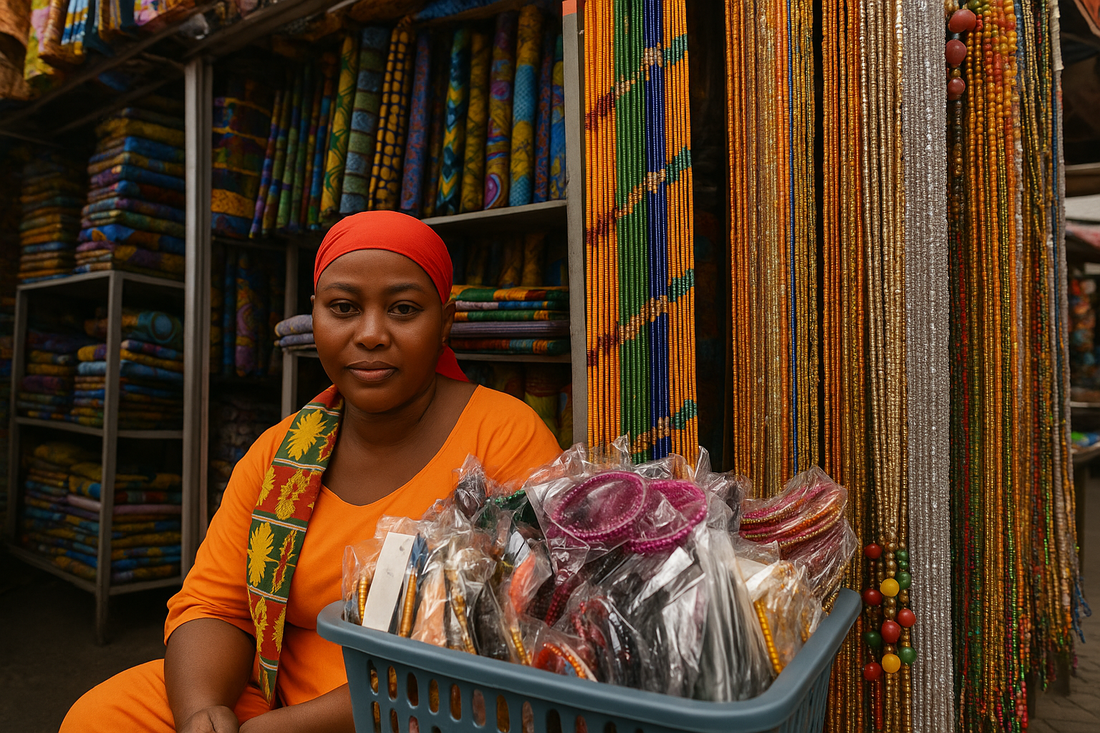
The Legacy of Waist Beads: A Cultural Tradition Reimagined
There’s a rhythm in every strand. A story in every shimmer. Waist beads, for generations, have spoken in the silent language of womanhood—marking transitions, adorning bodies, and echoing ancestral pride across West Africa.
As the founder of Adorned by Abena, I don’t just craft waist beads—I honor them. I wear them. And I continue to learn from the tradition that shaped them. This is both a love letter and a living archive.

Rooted in history: The Origins of Waist Beads
Waist beads trace their origins to ancient West African civilizations, where they were worn by women in Ghana, Nigeria, Senegal, and beyond. In Ghana—especially among the Akan and Krobo peoples—waist beads were more than decoration; they were sacred symbols.
Mothers would ceremoniously adorn their daughters during rites of passage, signaling their transition into womanhood. Some strands were strung with charms for fertility, others to signify status, sensuality, or spiritual protection. Among the Krobo, young girls participated in Dipo, a coming-of-age ritual where beads were layered delicately across the waist, hips, neck, and ankles—each placement with its own significance.
These strands weren’t meant for the public eye. They were personal, intimate, and deeply connected to identity, fertility, and feminine power.
The symbolism: Femininity, Spirituality, and Self
Waist beads have always spoken in layers—literally and metaphorically. In our culture, they are a multilayered expression of:
- Femininity: Celebrating curves, movement, sensuality, and softness
- Spirituality: Offering protection, balance, or energy alignment depending on the beads used
- Rites of passage: Marking transitions like puberty, marriage, childbirth, or healing after trauma
Some women use them to track changes in their bodies—loosening or tightening as a quiet, organic wellness check. Others anoint them with intention, prayer, or essential oils, turning them into wearable rituals.
And for many, they simply feel like home.
Embracing Tradition With Modern Grace
What I find most beautiful is how modern women are reclaiming waist beads on their own terms.
We’re wearing them in celebration, in stillness, in solitude, and in sisterhood. No longer hidden, they’re now styled proudly—peeking through crop tops, layered with swimsuits, or worn exclusively for our own gaze.
For Black women across the diaspora, waist beads are an act of reconnection. They tether us to an African legacy that colonization tried to erase. And yet, here we are—adorning ourselves anyway.
Some of us are new to the tradition, discovering it through travel, art, or friends. Others are revisiting what our grandmothers once wore with quiet dignity. We choose our colors with intention—red for passion, gold for abundance, blue for peace—and string them with purpose.
We’re not just reviving a practice. We’re reimagining it.
The Story Continues
At Adorned by Abena, every strand I create carries both memory and modernity. I approach this work as a student of tradition and a storyteller of feminine legacy.
This is more than a business for me—it’s a cultural offering. An invitation to adorn your body, reclaim your heritage, and walk in your divine softness. Whether you're new to waist beads or deepening your relationship with them, know this:
You are not just wearing beads.
You are wearing power.
You are wearing history.
You are wearing you.
Love, Beads & Culture is where ancestral wisdom meets contemporary expression. Through every post, we honor the threads that connect Africa to its diaspora—celebrating the artistry, symbolism, and sacred rituals woven into our adornments. Join us as we continue to reclaim, reimagine, and revel in the beauty of our shared heritage—one bead, one story, one strand at a time.
